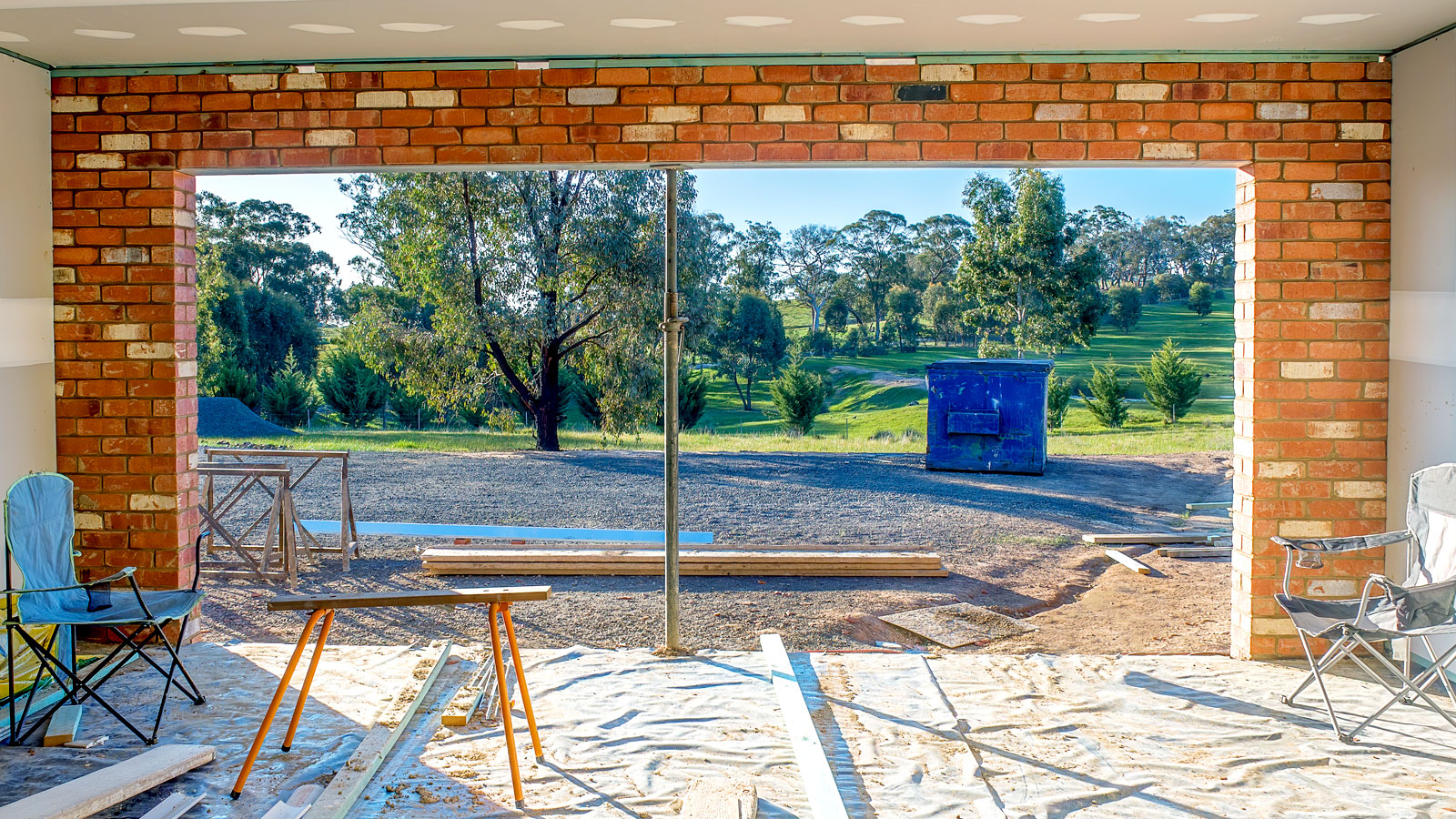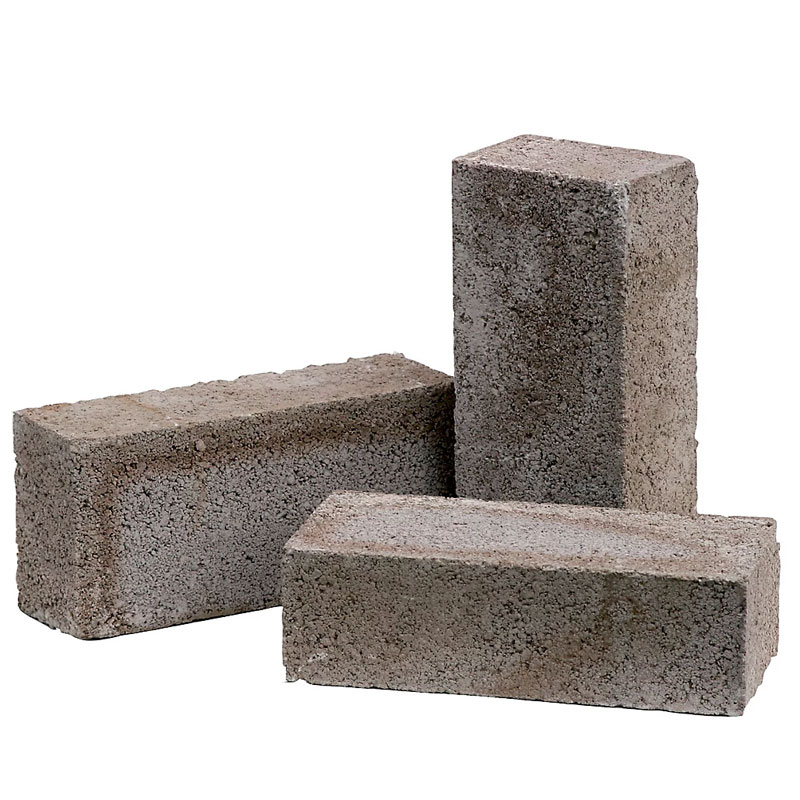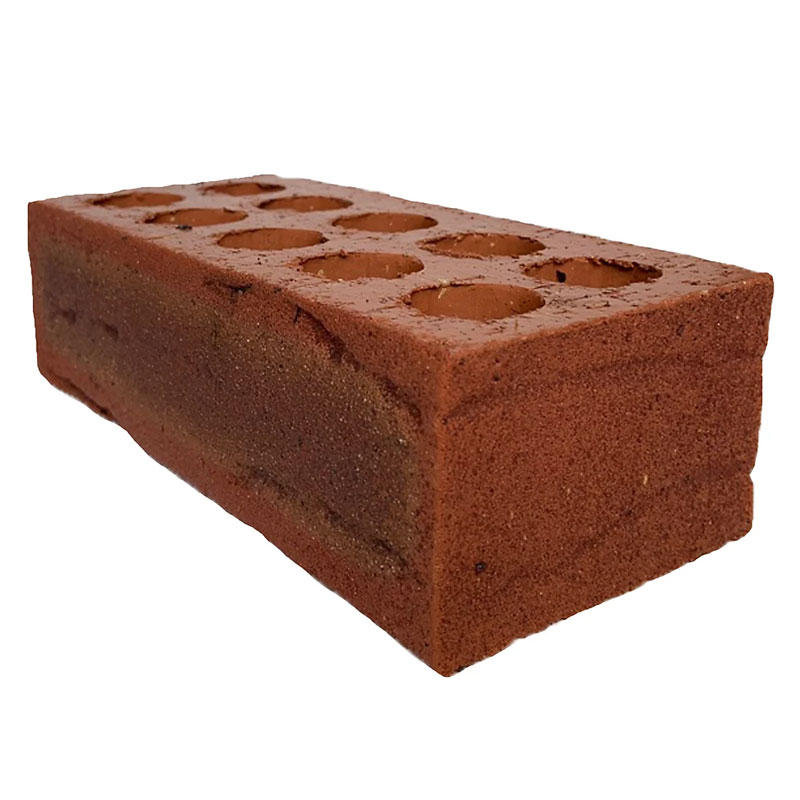Are you thinking about bricking up a garage door? Pros reveal what's needed and how much you can expect to pay
Bricking up a garage door is a quick and cost-effective way to add more space to your home

If you need more space in your home but don’t have the funds to make it happen right away bricking up a garage door is a budget-friendly alternative to a full-scale extension. All that’s needed is a single wall and window to create a large, ready-insulated living space.
Add in the finishing touches and give it a lick of paint and you’ll have a garage conversion that will give you a flexible living space that offers the extra room you need and add value to you’re home when you finally decide to sell.
Here you find out what is involved in the process, what materials are needed and how much a pro will charge to make it happen.
Should you choose a DIY route or trades?
Bricking up a garage door is not a typical DIY project. There are a lot of skills, tools and knowledge of regulations needed to brick up a garage door. You will need to be a labourer, bricklayer and window fitter. On top of the skills needed, you will need to invest in a host of tools. If you don’t have the correct ones already, it will add to the overall cost of the project.
Unless you’re a seasoned DIYer, we recommend that you call in a professional to get the job done.

Paul Kerr is an experienced branch manager with a demonstrated history of working in the retail and merchanting industry. Skilled in Management, Retail, Sales, and home building advice. Through Beatsons he has seen everything from outdoor patio organisation to full rebuilds!
Should you brick up a garage door?
Bricking up a garage door is a smart way to add extra space to a home and is more cost-effective than building an extension. The majority of the space is already in place, so it is effectively only one wall that needs to be put up; however, there may be a few criteria that you need to watch out for. As Paul Kerr, a building specialist at Beatsons, shares, “Planning permission may be needed if you're making any structural changes or adding things like windows, doors or ventilation.”
But if you are simply bricking up an opening, you should be OK, says Kerr. “You should be fine if most of the work is internal and you aren't extending the footprint of the property.” Kevin Keen, owner of Keen's Buildings, adds, “It is also worth noting that building control still inspects footing depth, cavity construction, insulation and Part L U-values.“ This ensures that any work carried out is in accordance with regulations.
There can be other considerations, points out Kerr. “The conservation status of your home is also important here. For conservation areas and grade-listed buildings, planning permission would be needed.” To make sure you can contact your local authority for guidance.
Bring your dream home to life with expert advice, how to guides and design inspiration. Sign up for our newsletter and get two free tickets to a Homebuilding & Renovating Show near you.

Kevin has been in the industry for 25 years and handles everything, from the distribution and installation of portable structures to financing and manufacturing. He can speak with authority on every aspect of construction.
Cost to brick up a garage door
As you might expect, there isn’t a simple answer to how much it will cost. As Kerr points out, “The unfortunate answer to the question of price is...it depends.” The type of materials used can significantly impact the final cost. For example, using bespoke oak wooden frames will significantly increase the price compared to basic off-the-shelf UPVC window and door frames.
In addition to the standard materials, you also need to consider labour and additional costs. “Labour will cost around £150-£250 per day,” says Kerr. But there are other costs to think about as Kerr adds, “And you have extras such as skip hire, insulation, additional structural reinforcements (lintels etc) and brick matching to keep the aesthetic the same as the rest of the house.”
As a general guideline on price, Kerr says, “Around £2000 might be needed here as a minimum starting point,” he adds, “but it will vary depending on the traders and labourers you hire.” As always, be sure to obtain two or three quotes from local trades to ensure a more accurate price tailored to your specific needs.
Try these materials for bricking up a garage door
Cost of materials
If you’re going to tackle the project yourself or purchase the materials needed for the job, you’ll need to know how much to budget. Bricks and blocks are the two key components. Kerr says, “Concrete blocks are needed on the inside leaf of the building, with bricks added on the external layer, these blocks cost around £1.20 each.” But the price can rise depending on size, density and material. For example, thermal blocks are around £0.40 more per block.
The price of bricks can vary. Kerr says, “Bricks can start from as little as 80 pence per brick, depending on the material/style of said brick.” But Keen adds, “Handmade, reclaimed or colour-matched bricks double the spend.”
Beyond bricks, there is “Damp proofing costs and insulation costs,” points out Kerr. This will cost around £50 to £100 for each. Keen adds, “Other costs will include bags of mortar, stainless ties and sealant.” This will add around another £100 to the cost.
Kerr finishes by saying, “You might be able to source all the materials for around £1000-£1200.” But this will depend on the quality of materials and the size of the garage door.
FAQs
How many bricks/blocks will be needed?
The average size for a garage door in the UK is 2.4m x 2.1m. For this, you will need around 300 bricks for the outer wall and 50 concrete blocks for the inner wall. Add around 5-10% to ensure that you don’t fall short. Use an online tool like the Jewson Brick Calculator to estimate how many bricks and blocks you’ll need.
You will need approximately 25 x 20kg bags of mixed mortar to build the walls. A rough guide is one 20kg bag for 25 bricks, or three bags per square metre. Obviously, bricks use more mortar than blocks, so you will need less for a block wall.
How long does it typically take to brick up a garage door?
For a straightforward build (walls only), Kerr says, ”For brick only builds (if it's a standard UK-sized garage) it should take a couple of days, around three tops with a well-experienced labour team.” Windows are a typical component when bricking a wall, commonly one, which will take around a day to sort and seal.
Finally, to finish the job, you need to be plastering walls and painting. For this, you should allow a day for each. Remember, you will need to let the plaster dry completely before adding a mist coat or wallpapering new plaster.
Newly constructed walls require plastering to achieve a smooth finish. Check out our how to plaster a wall and painting new plaster guides to ensure a good finish. Alternatively, if you want to add wallpaper, try our how to wallpaper guide.
Steve Jenkins is a freelance content creator with over two decades of experience working in digital and print and was previously the DIY content editor for Homebuilding & Renovating.
He is a keen DIYer with over 20 years of experience in transforming and renovating the many homes he has lived in. He specialises in painting and decorating, but has a wide range of skills gleaned from working in the building trade for around 10 years and spending time at night school learning how to plaster and plumb.
He has fitted kitchens, tiled bathrooms and kitchens, laid many floors, built partition walls, plastered walls, plumbed in bathrooms, worked on loft conversions and much more. And when he's not sure how to tackle a DIY project he has a wide network of friends – including plumbers, gas engineers, tilers, carpenters, painters and decorators, electricians and builders – in the trade to call upon.




